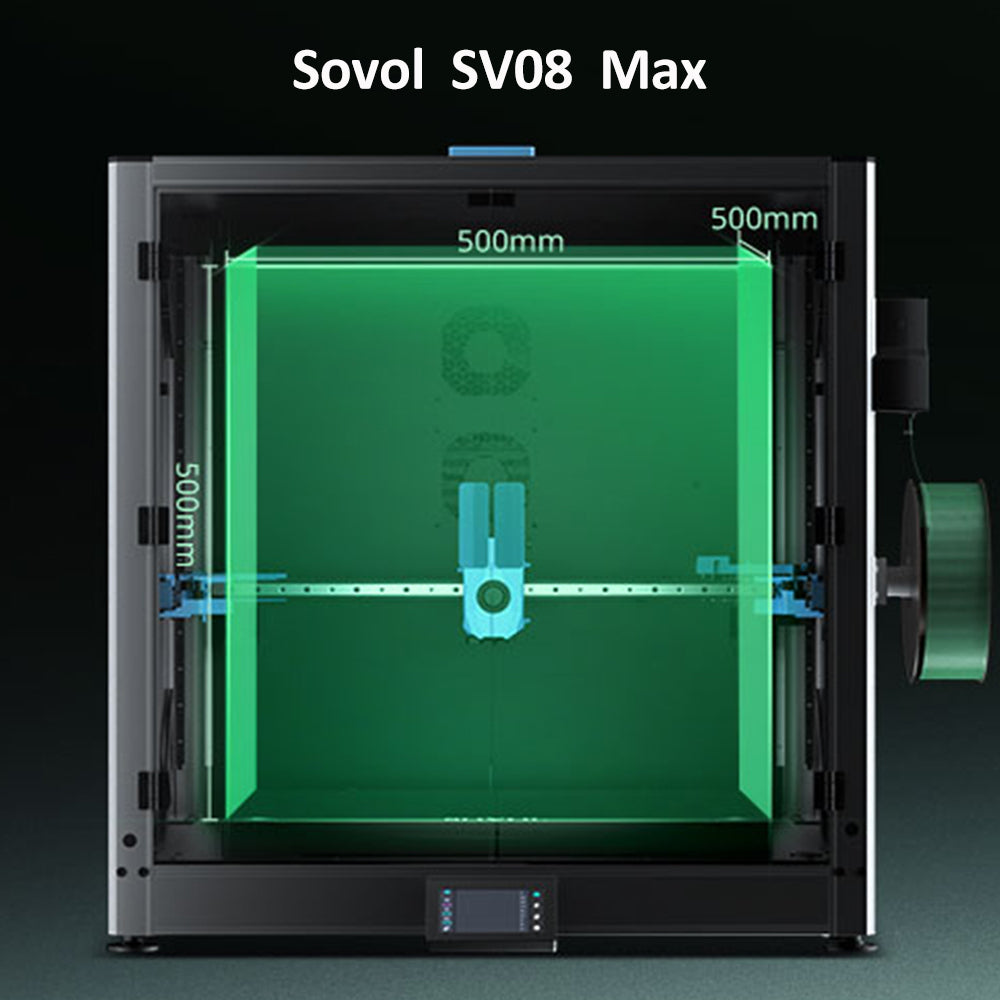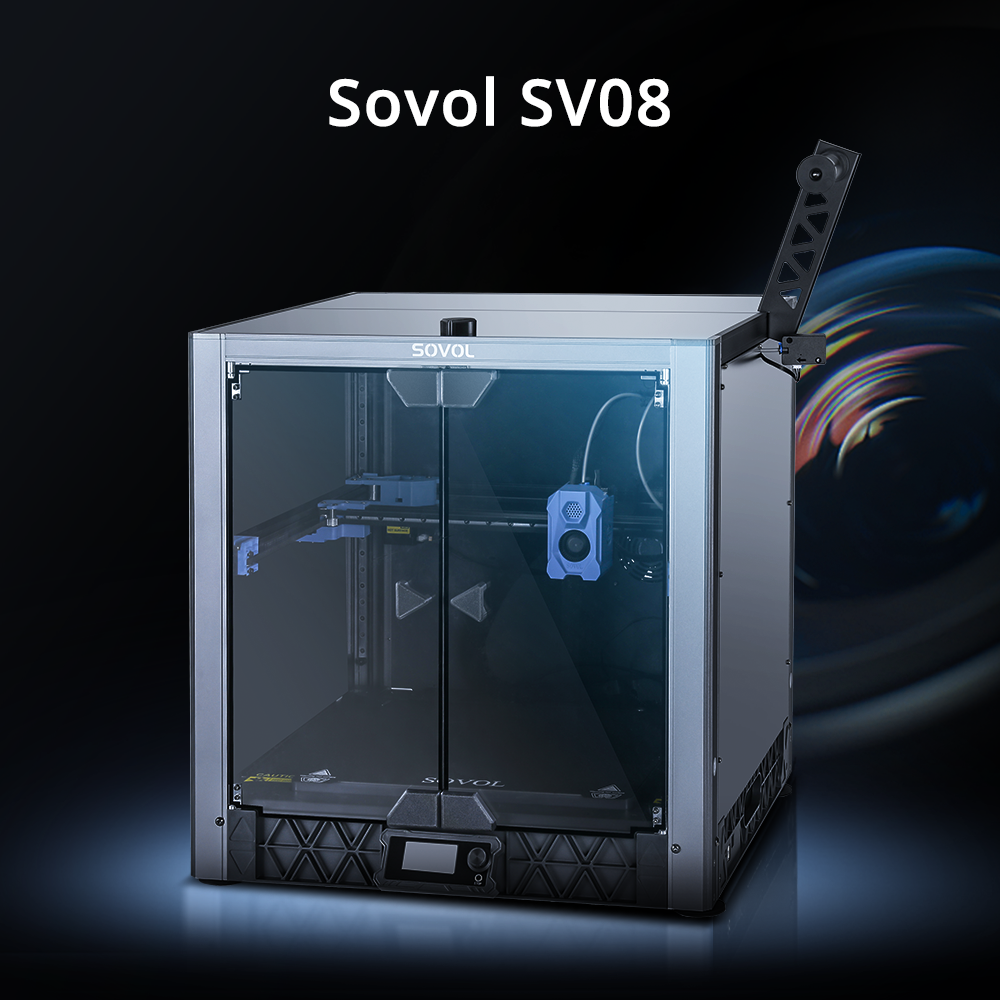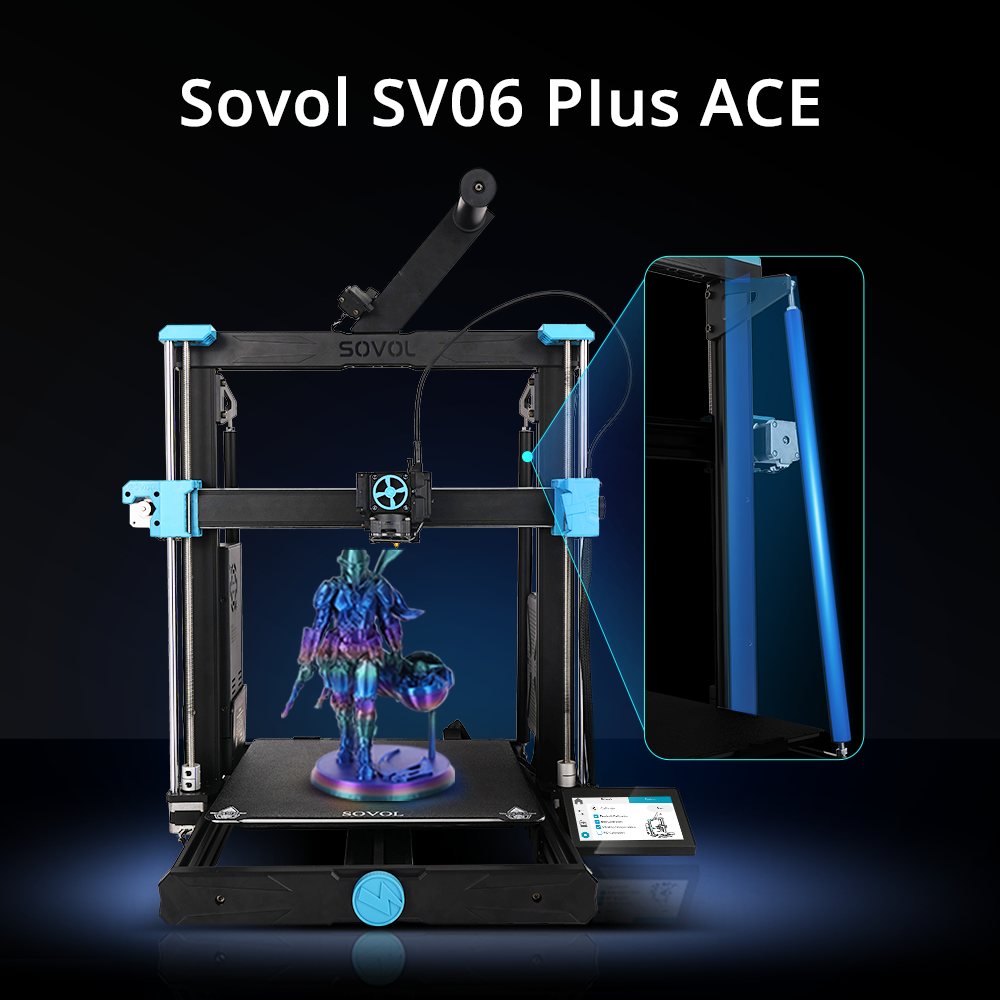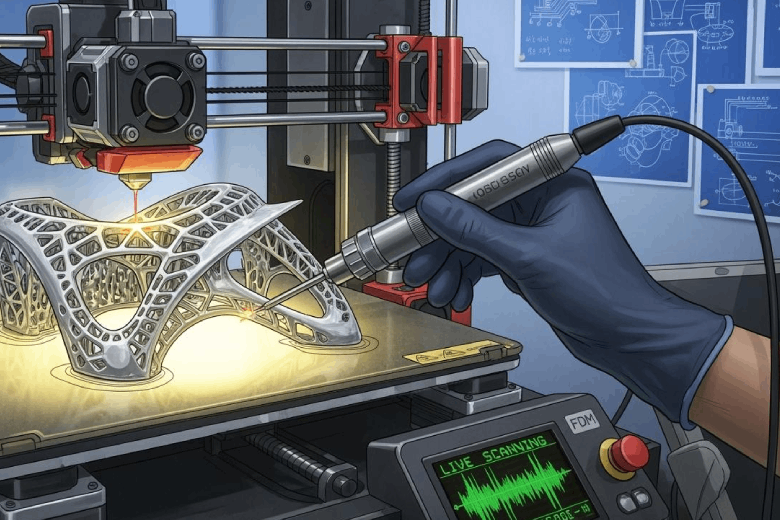You face tough challenges in 3D printing today. Material properties change from batch to batch. Print speed and layer thickness can shift, causing parts to lose accuracy. Problems like porosity and weak structures often appear. Removing supports without damage is hard. Old inspection methods do not fit the new demands of additive manufacturing. The Eddy Current Scanning Kit helps you solve these problems. It gives you better defect detection, auto bed leveling, and faster production.
Key Takeaways
- The Eddy Current Scanning Kit detects hidden defects in 3D printed parts, ensuring higher quality and reliability.
- Automated inspection with the kit saves time and reduces errors, allowing for continuous production without interruptions.
- The kit simplifies bed leveling, improving print accuracy and reducing the risk of failed prints.
- Digital imaging features provide clear records of inspections, helping maintain quality standards over time.
- Using this technology prepares you for future challenges in additive manufacturing, enhancing safety and precision.
Quality Challenges in 3D Printing
Common Defects in Additive Manufacturing
You encounter many types of defects when you work with 3D printing. Each technology brings its own set of challenges. Surface roughness can make your parts look and feel uneven. Cracks often form because of temperature changes or stress during printing. Gas porosity happens when gas gets trapped inside the material, which weakens the part. Geometric deformation can cause your prints to lose their shape and accuracy. The table below shows some of the most common defects you might see:
|
Defect Type |
Description |
|---|---|
|
Surface Roughness |
Poor surface quality affects powder quality and leads to internal defects. |
|
Cracks |
Related to temperature distribution, residual stress, and incomplete fusion. |
|
Gas Porosity |
Caused by trapped gas during the printing process, affecting the integrity of the part. |
|
Geometric Deformation |
Results from heat accumulation and stress concentration, leading to dimensional errors. |
You need to spot these problems early to avoid wasted time and materials. If you miss a defect, you risk producing parts that fail in real-world use. The right inspection tools help you catch these issues before they become costly mistakes.
Limits of Traditional Inspection
You may rely on visual checks or manual measurements to inspect your 3D printed parts. These methods often fall short. Manual inspection can miss tiny flaws and depends too much on the skill of the person doing the work. You might spend hours checking each part, which slows down your production. Automated Optical Inspection (AOI) systems offer several advantages:
- AOI systems improve accuracy by removing human error.
- You inspect parts much faster with AOI than with manual methods.
- AOI ensures consistent standards, so every part gets the same level of attention.
You need better solutions to keep up with the demands of modern additive manufacturing. The Eddy Current Scanning Kit gives you a way to automate inspection and catch defects that traditional methods overlook. You can trust your results and keep your production moving.
Eddy Current Scanning Kit in 3D Printing
How the Kit Works
You want to make sure every 3D printed part meets high standards. The Eddy Current Scanning Kit helps you do this by using electromagnetic fields to inspect metal parts without causing any damage. When you use this kit, it sends high-frequency magnetic fields into the metal. These fields create small electric currents, called eddy currents, inside the material. If there are any hidden problems, like sub-surface voids or spherical cavities, the eddy currents change. The kit detects these changes and alerts you to possible defects.
You can find flaws that are hard to see with your eyes or even with other machines. For example, this technology can spot spherical cavity defects as small as 0.5 mm in diameter, even if they are 1.5 mm below the surface. It also helps you find side-drilled holes and other voids that could weaken your part. This means you can trust the quality of your prints and avoid failures later.
Tip: Non-destructive inspection lets you check every part without breaking or damaging it. You keep your workflow smooth and your parts strong.
Auto Bed Leveling and Metal Plate Compatibility
You need a flat and level print bed for the best results. The Eddy Current Scanning Kit makes auto bed leveling easy, especially when you use metal build plates. The kit uses high-frequency magnetic fields to scan the surface of the bed. It quickly measures the height at many points, creating a detailed map of the surface. Your printer then uses this map to adjust the nozzle during printing, so every layer goes down perfectly, even if the bed has small bumps or dips.
This kit works well with many popular 3D printers that use metal plates. Some of the most compatible models include:
- Sovol SV08 Max
- Sovol SV08
- Sovol Zero
- Comgrow T500
- Sovol SV06 ACE
- Sovol SV06 Plus ACE
You can upgrade your printer with this kit and get more reliable prints. However, some users report challenges when setting up the kit. You might find the instructions unclear or notice missing sample configurations in the documentation. This can make the first setup feel frustrating. If you plan to use the kit, look for community guides or support forums to help you get started.
Note: Good documentation and software support can make your experience much smoother. Always check for updates and user tips before you begin.
The Eddy Current Scanning Kit gives you a powerful way to improve both inspection and print quality. You can catch hidden defects, level your bed with precision, and work with a wide range of metal plate printers. This technology helps you produce better parts and keeps your workflow efficient.
Key Benefits of Eddy Current Scanning Kit
Fast and Accurate Flaw Detection
You need a tool that finds flaws quickly and with high accuracy. The Eddy Current Scanning Kit gives you this advantage. It uses electromagnetic fields to spot both surface and subsurface defects in your 3D printed parts. You can see how it compares to other non-destructive testing (NDT) methods in the table below:
|
Aspect |
Eddy Current Testing |
Other NDT Methods |
|---|---|---|
|
Sensitivity to Surface Flaws |
High |
Varies |
|
Detection of Subsurface Defects |
Good |
Limited in some methods |
|
Preparation Requirements |
Minimal |
Often requires more prep |
|
Applicability to Complex Geometries |
Yes |
Limited in some cases |
|
Portability |
High |
Varies |
You can detect small cracks and voids that other methods might miss. This means you catch problems before they cause failures.
Simplified Automated Inspection
You want your inspection process to be easy and efficient. The Eddy Current Scanning Kit helps you automate checks during printing. You do not need to stop production or remove parts for testing. With in-situ monitoring, you can:
- Track the condition of the powder bed and printed layers.
- Monitor temperature changes in real time.
- Adjust laser power to prevent overheating and defects.
- Collect data on the melting pool size and location.
You save time and reduce errors. Automated inspection lets you focus on producing high-quality parts instead of manual checks.
Digital Imaging and Record-Keeping
You benefit from digital imaging features built into modern scanning kits. For example, the Sovol SV08 Max uses electromagnetic fields to detect surface imperfections without touching the part. This system calibrates the Z-axis automatically, which improves bed leveling and print accuracy. You get clear digital records of each inspection. These records help you track quality over time and make it easier to solve problems if they appear.
Tip: Digital records give you proof of quality and help you meet industry standards.
The Eddy Current Scanning Kit brings you fast flaw detection, easy automation, and reliable digital records. You can trust your 3D printed parts to meet the highest standards.
Technical Innovations and Future Trends
Eddy Current Array Technology
You see rapid progress in eddy current array technology for 3D printing. Modern probes now use printed flexible designs. These probes fit complex shapes, such as turbine blades, and help you inspect hard-to-reach areas. Manufacturers have increased copper trace density in the coils. This change creates stronger magnetic fields and improves energy transfer. Lower noise levels in the system give you clearer signals, making it easier to spot small flaws. Modular designs let you replace damaged parts quickly. A protective thermoplastic PEEK layer adds durability for long inspections.
|
Innovation |
Description |
|---|---|
|
Printed Flexible ECA Probes |
Designed for turbine and complex geometry inspections |
|
Increased Copper Trace Density |
Stronger magnetic fields and better energy transfer |
|
Lower Noise Levels |
Stronger signals and better detection of small flaws |
|
Modular Design |
Easy replacement of damaged components |
|
Protective Layer |
Thermoplastic PEEK layer for more durability |
Eddy current array technology lets you inspect large areas in a single pass. Multiple coils in the probe collect more data at once. You finish inspections faster and with higher accuracy. You can scan the body of a weld and heat-affected zones in less than three minutes. This speed increases your chances of finding hidden defects.
- Faster inspections over large areas
- More information captured in one scan
- Higher speed, accuracy, and repeatability
- Better coverage for complex parts
Integration with Automated Systems
You benefit from the integration of eddy current scanning with automated inspection systems. Many industries use these systems to meet strict quality standards. Automated platforms, such as gantry bridges and robotic arms, support different inspection methods. You can adapt these systems for specific tasks, like inspecting brake rotors or gear blanks.
|
System Type |
Description |
|---|---|
|
Automated Inspection Systems |
Meet challenging inspection needs |
|
Mechanical Platforms |
Support various inspection methods |
|
Gantry Bridge, Pass-Through, Immersion Tank, Robotic |
Adapted to specific applications and conditions |
|
Product Name |
Description |
|---|---|
|
Robotic & Automated Eddy Current Systems |
Improve flaw detection & reduce inspection costs |
|
Transmission Clutch Inspection Machine |
Inspect transmission clutches |
|
Brake Rotor Inspection |
Inspect brake rotors |
|
Gear Blanks |
Test gear blanks |
|
Wheel Bearings |
Inspect wheel bearings |
|
Transmission Shafts |
Test transmission shafts |
|
CV Cage Inspection Machine |
Inspect CV cages |
You find these systems in metal, aerospace, transportation, power generation, and oil and gas industries. Phased array and eddy current array systems inspect both the surface and the full volume of your products. When you use the Eddy Current Scanning Kit with automated platforms, you improve flaw detection and reduce inspection costs. This combination prepares you for the future of 3D printing quality control.
You need reliable tools to ensure quality in 3D printing. The Eddy Current Scanning Kit stands out because it detects unique porosity, reveals residual-stress profiles, and supports high standards in industries like aerospace and medical implants.
- You can spot hidden flaws that other methods miss.
- You maintain consistent quality with advanced non-destructive testing.
- You prepare for future demands in additive manufacturing.
Adopting this technology helps you deliver safer, stronger, and more precise 3D printed parts.
FAQ
How does the Eddy Current Scanning Kit improve print quality?
You use the kit to detect hidden flaws and ensure your print bed stays level. This helps you avoid failed prints and weak parts. You get more reliable results with less manual checking.
Can you use the kit with non-metal print beds?
You need a metal surface for the kit to work. The technology relies on electromagnetic fields that interact with metal. Plastic or glass beds will not support eddy current scanning.
Is the Eddy Current Scanning Kit hard to install?
Most users find the kit easy to install on compatible printers. You may need to follow setup guides or check community forums for tips. Good documentation makes the process smoother.
What types of defects can you detect with this kit?
You can spot surface cracks, subsurface voids, and even small cavities. The kit helps you catch problems that visual checks often miss.







